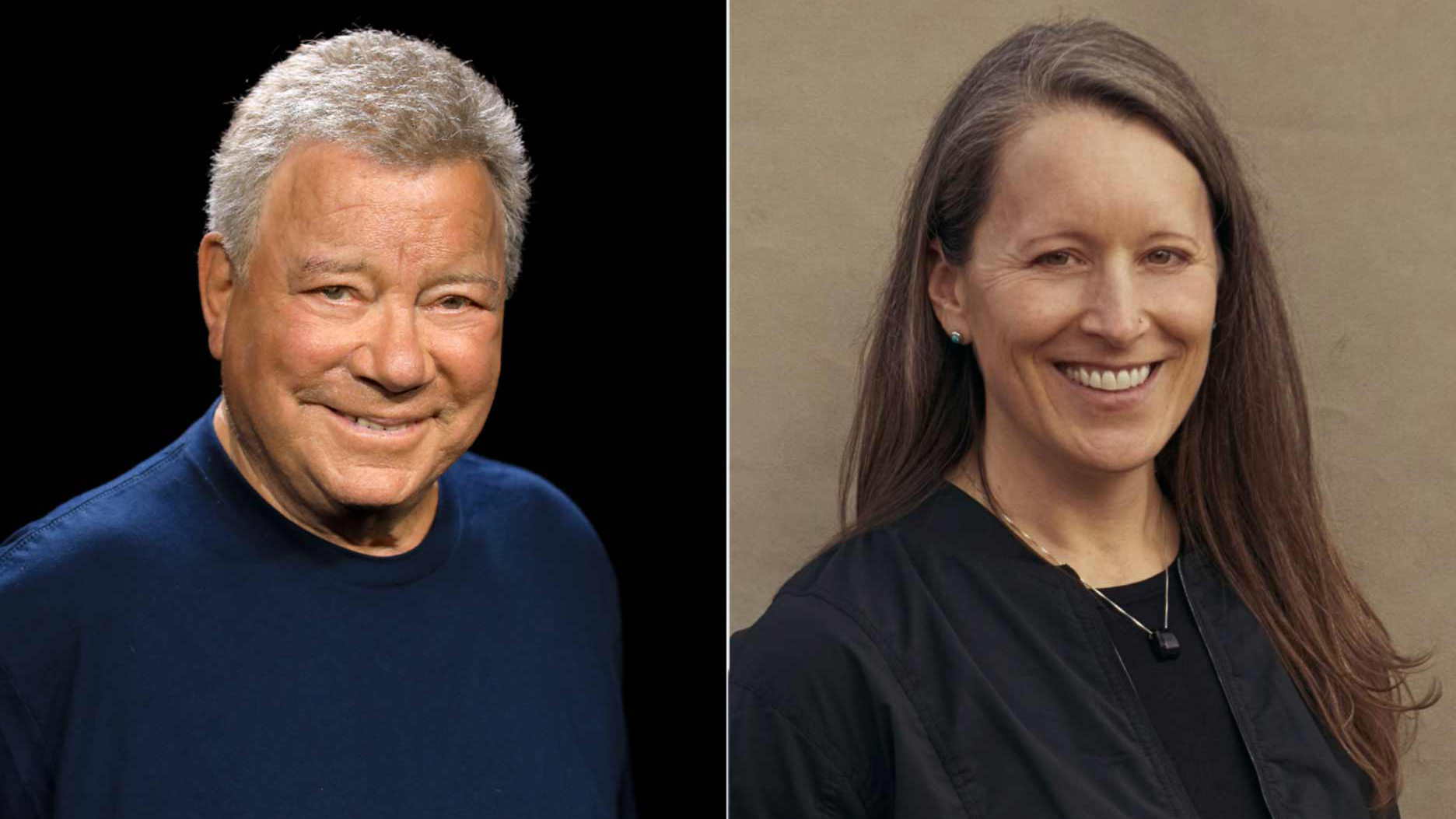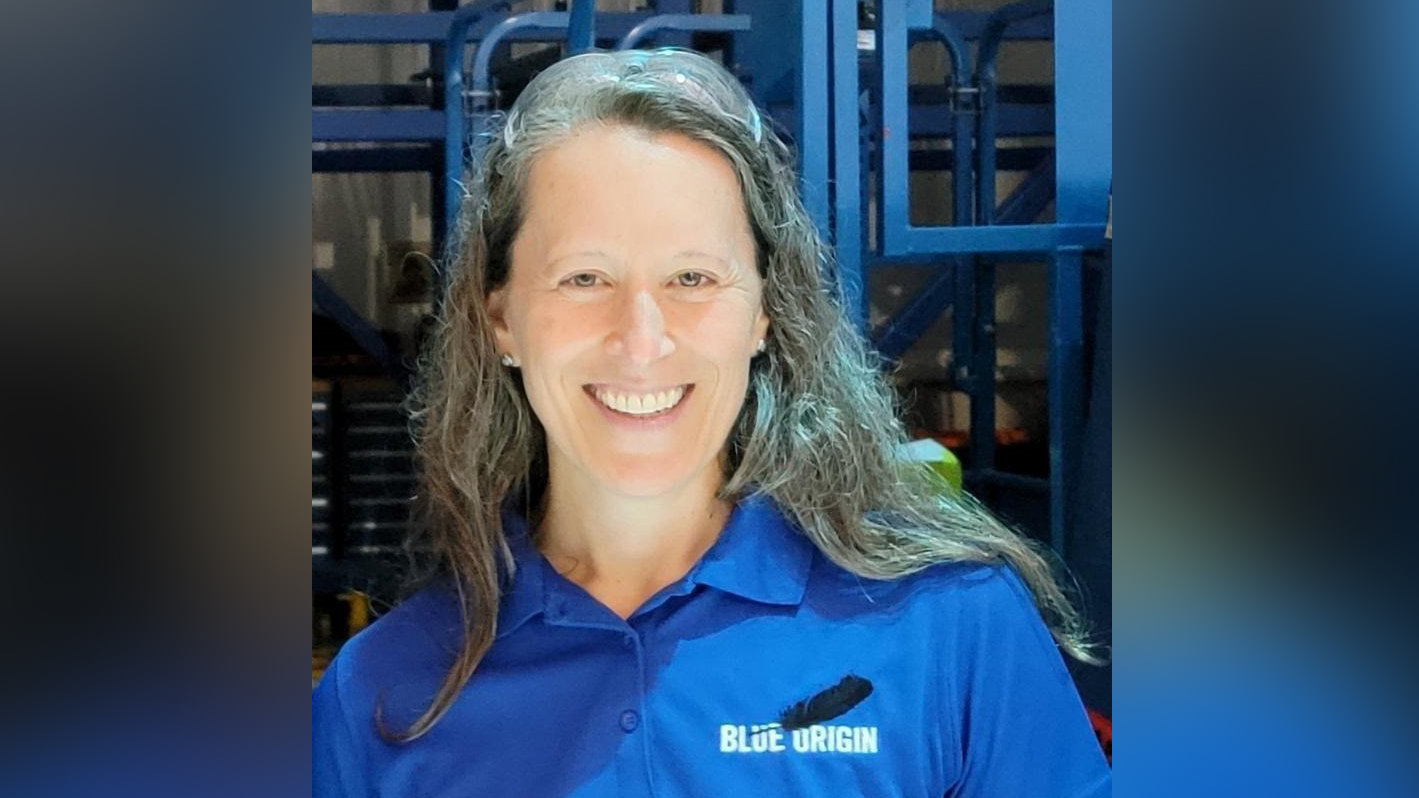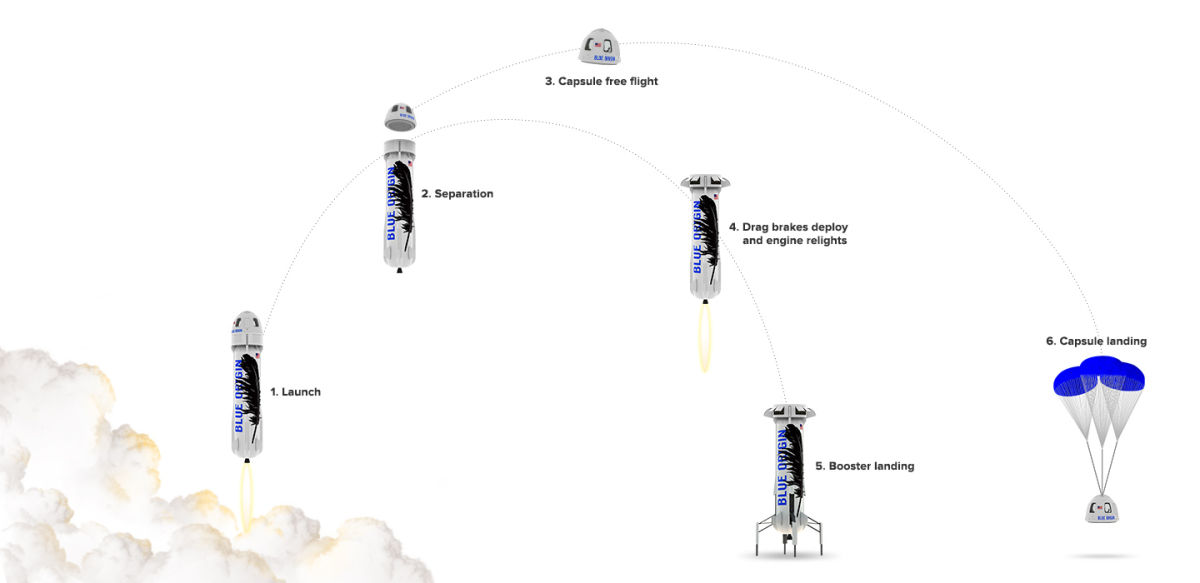William Shatner's space launch on Blue Origin's New Shepard: When to watch and what to know
The launch is set for 9:30 a.m. EDT (1330 GMT) on Oct. 12, 2021.
Blue Origin's next crewed space mission will see a "Star Trek" captain explore the strange new world of space for real.
On Oct. 12, the company's second crewed flight on its New Shepard spacecraft after flying founder Jeff Bezos in July will include starring passenger William Shatner, an actor best known for portraying Captain James T. Kirk in the iconic sci-fi franchise "Star Trek."
The mission, called NS-18, also includes a senior Blue Origin employee and two co-founders of space-related technology companies. Launch time for New Shepard is set for 8:30 a.m. local time (9:30 a.m. EDT or 13:30 GMT) from the company's Launch Site One near Van Horn, Texas.
Here's everything you need to know about the flight.
Live updates: Follow William Shatner's Blue Origin launch here
Related: Star Trek movies, ranked worst to best
What time is Blue Origin's launch and can I watch?
The launch of New Shepard's second crewed flight will be broadcast Tuesday (Oct. 12) with a likely start time of 8 a.m. EDT (12 GMT) at BlueOrigin.com and here at Space.com, if possible. Liftoff is expected at 9:30 a.m. EDT (1330 GMT), but could change depending on weather or technical matters.
A typical New Shepard flight lasts 11 minutes. After the landing, based on what happened with the Bezos crew in July, a live broadcast with the astronauts will likely be available at BlueOrigin.com. If that happens, Blue Origin will likely stream it online and Space.com will simulcast it if possible. The company will also likely share mission updates all day via @BlueOrigin on Twitter.
A normal New Shepard flight sees the spacecraft fly well above the 62-mile (100 kilometers) Kármán line that international authorities recognize as the boundary of space. (Competitor Virgin Galactic does not, which has sparked sparring among the two companies.) The rocket will come back to its launch site autonomously and land, and the crew capsule will descend a few minutes later under a parachute.
Sign up for the Live Science daily newsletter now
Get the world’s most fascinating discoveries delivered straight to your inbox.
Who is Blue Origin launching on New Shepard?



REPLACE THIS WITH 16x9 images of the crew
New Shepard's second crewed flight will carry four passengers, but no pilot as the space capsule is an automated system. The crew will include:
William Shatner, 90, an actor best known for playing Captain James T. Kirk in "Star Trek" and Denny Crane on both "Boston Legal" and "The Practice." Shatner is expected to be the oldest person to fly in suborbital space, beating the record set by 82-year-old Wally Funk (an aviator and Mercury 13 member) during Blue Origin's July flight. (The oldest person to reach orbit was NASA astronaut John Glenn, at age 77, back in 1998; Glenn came out of retirement to join an aging-focused shuttle mission.)
Related: William Shatner's age will make him the oldest person to fly in space
Audrey Powers, age not disclosed, is Blue Origin's vice-president of mission and flight operations who oversees New Shepard flight operations, vehicle maintenance and mission infrastructure. She played a key role in certifying New Shepard for flight and is likely flying in her official company capacity. Powers used to be Blue Origin's deputy general counsel and vice-president of legal and compliance, and a NASA mission controller for the International Space Station program. She is a pilot and is the chair of the board of directors for the Commercial Spaceflight Federation.
Chris Boshuizen, age not disclosed, is co-founder of Earth observation company Planet Labs (today called Planet). Between 2008 and 2012, he was a space mission architect at NASA's Ames Research Center and co-invented a small satellite known as the NASA Phonesat. He also established Singularity University and was the first executive director of the Space Generation Advisory Council.
Glen de Vries, reportedly about 49 years old, is vice chair for life sciences and healthcare at French software company Dassault Systèmes. In 2019, Dassault acquired the 20-year-old company de Vries founded, called Medidata Solutions. The software platform he built has been used for more than 25,000 clinical trials.
What is Blue Origin's mission for the flight?

New Shepard has performed 17 flights prior to Shatner's flight, which is called NS-18. Most of those previous efforts were uncrewed tests or payload research flights. The most recent flight was on Aug. 26, when New Shepard sent a payload-focused mission to suborbital space along with a NASA lunar landing technology demonstration.
The spacecraft's only human spaceflight to date launched on July 20, when it flew founder Jeff Bezos, Bezos' brother Mark, Mercury 13 aviator Wally Funk and 18-year-old student Oliver Daemen (son of a hedge fund manager) to suborbital space.
New Shepard is named after Mercury astronaut Alan Shepard, who was the first American to go to space in 1961. It is about 60 feet (18 meters) tall and passengers aboard its suborbital flights experience "weightlessness" for about three minutes. Blue Origin has not yet disclosed seat pricing to the public; competitor Virgin Galactic now sells seats for $450,000 apiece.
Infographic: How Blue Origin's New Shepard rocket works
For your money, the spaceflight is relatively brief, lasting 11 minutes from launch to landing. The rocket comes back autonomously to the launch pad and is aerodynamically stabilized using a ring and wedge fins. The crew members descend separately underneath the capsule's parachute.
While New Shepard has only flown at most four people at a time, its maximum capacity is six people and Blue Origin cites the spacecraft's "big, beautiful windows" as a marketing tool to attract the super-rich. The company also plans to bring in paying companies who seek using microgravity for advances in science.
What will Blue Origin astronauts experience?
The Bezos-led crew in July only received 14 hours of training over a few days to learn basic flight and emergency procedures for the autonomous spacecraft. The crew also did not wear spacesuits, instead wearing blue jumpsuits with Blue Origin livery.
Footage of the flight showed the crew relaxing during the launch and landing, which was monitored by Blue Origin personnel on the ground, and floating in the capsule during the weightless phase exclaiming enthusiastically about the view.
When Blue Origin first auctioned seats in early 2021, it had a terms and conditions document for flight crews such as requiring spaceflyers to dress themselves in a flight suit and to ascend the launch tower (seven flights of stairs) in less than 90 seconds. Funk, age 82, swiftly led that first crew up the stairs.

While the company emphasizes the view and the autonomous experience, like all spaceflights the New Shepard flight is a high-risk activity. Passengers face multiple forces of gravity, or G-loads, during launch and landing. They are trained to unstrap themselves within 15 seconds in case of emergency.
On Sept. 30, 21 Blue Origin employees (all but one anonymous) penned an essay with scathing criticisms about the company's culture and safety practices, saying among other issues that the company was rushing the launch process to get paying passengers to suborbital flight. To date, New Shepard has flown 17 times since 2015. Blue Origin has successfully recovered both capsule and booster on all but one attempt due to a hydraulics issue on the the first flight, NS1, in April 2015 that prevented the booster from landing as planned.
Blue Origin uses its RSS First Step (RSS is short for Reusable Space Ship) for crewed flights. A different New Shepard capsule, called RSS H.G. Wells, is used for uncrewed science flights.
Where does Blue Origin launch New Shepard from?
Blue Origin's launching facilities are called Launch Site One, a remote area in the West Texas desert roughly 25 miles from the town of Van Horn. During the last crewed launch in July, Blue Origin highly restricted the desert area around the launch site, even along nearby State Highway 54, so it is unlikely you will be able to get anywhere close to the site unless you are on the media list (which was very limited during the Bezos launch.)
You can view the facilities in a short tour video Blue Origin previously released. All paying customers do have the chance to visit the spacecraft and to learn about the nearby support facilities, according to the video, before their launch to suborbital space.
When could I launch to space with Blue Origin?

Blue Origin has a spot on its website where you can reserve your interest for future flights, although we don't know how often it plans to launch or how much a seat costs. "You’ll receive early access to pricing information and tickets when we open reservations," the company has promised.
There is likely a backlog of high-profile passengers and Blue Origin employees that will fly before the public does. For example, an undisclosed individual won a $28 million seat auction for the first flight with Bezos, but turned it down due to lack of availability and Daemen (whose father had a runner-up bid on behalf of his son) was named as a replacement. We still don't know who that individual was and if they have rebooked for another flight.
Virgin Galactic flights retail now for $450,000 apiece and in early October, stratospheric balloon flight provider World View said it would start flying customers for $50,000 a seat in 2024, if the schedule holds. World View does not reach space, but is high enough in the atmosphere to see the curvature of Earth.
Follow Elizabeth Howell on Twitter @howellspace. Follow us on Twitter @Spacedotcom and on Facebook.

Elizabeth Howell was staff reporter at Space.com between 2022 and 2024 and a regular contributor to Live Science and Space.com between 2012 and 2022. Elizabeth's reporting includes multiple exclusives with the White House, speaking several times with the International Space Station, witnessing five human spaceflight launches on two continents, flying parabolic, working inside a spacesuit, and participating in a simulated Mars mission. Her latest book, "Why Am I Taller?" (ECW Press, 2022) is co-written with astronaut Dave Williams.










